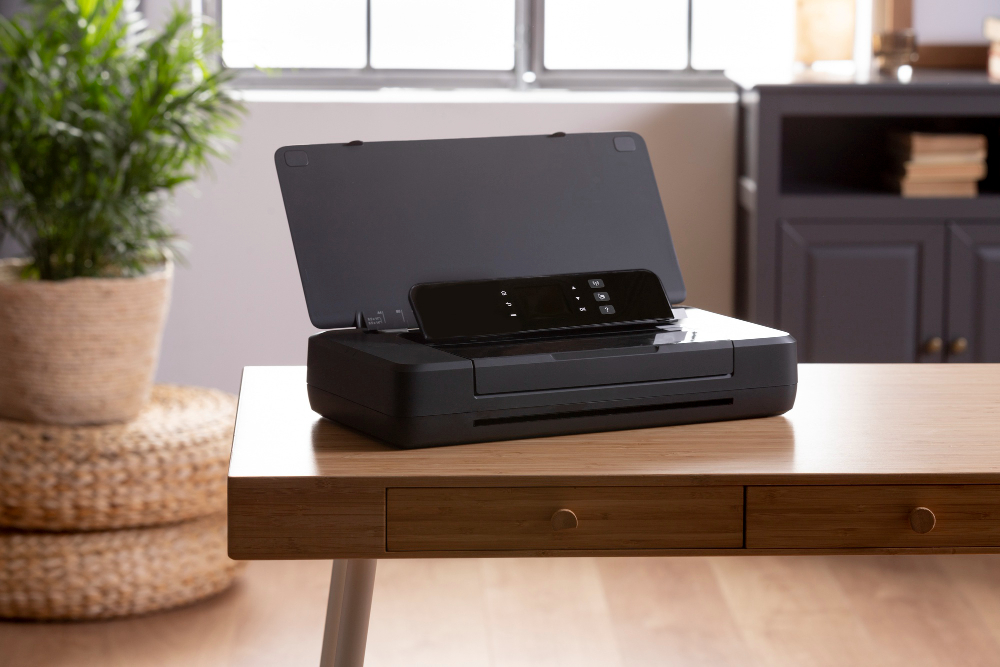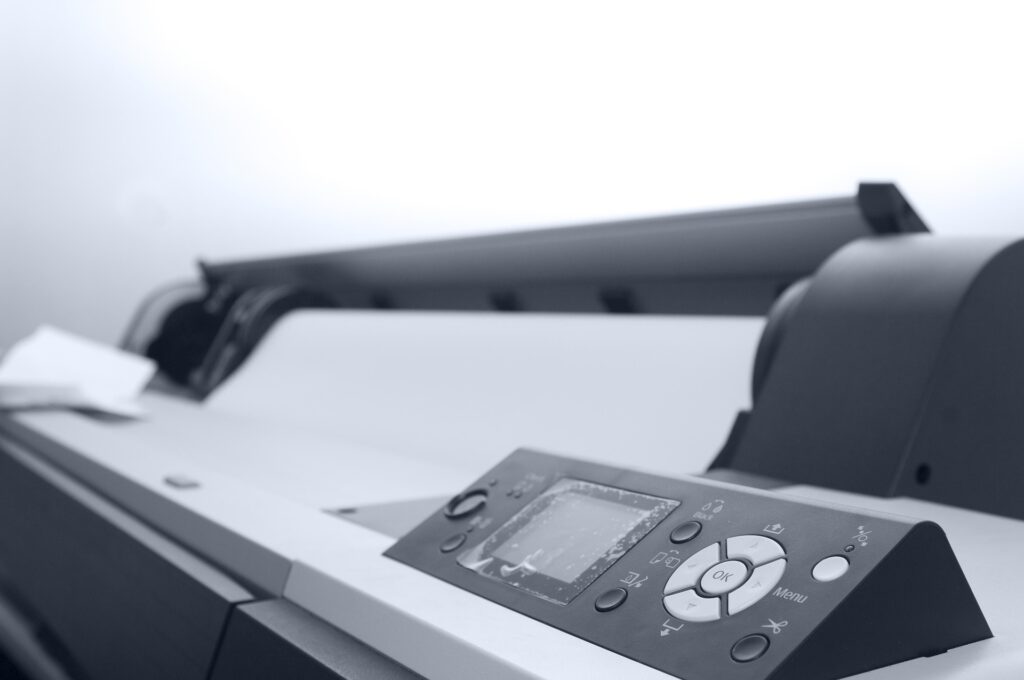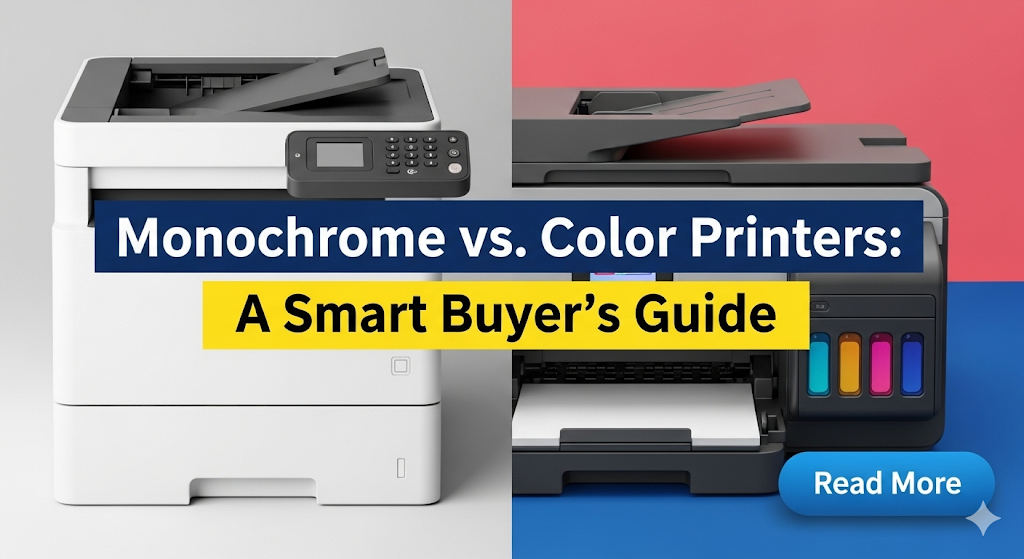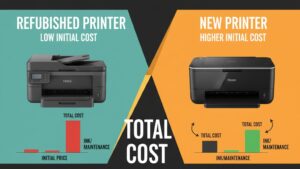Introduction
Choosing between monochrome vs color printers can feel overwhelming when you’re shopping for a new printing solution. Whether you’re setting up a home office or upgrading your business equipment, this decision impacts your budget, productivity, and print quality for years to come.
The right printer choice depends on your specific needs, printing volume, and budget constraints. Monochrome printers excel at text documents and cost-effective printing, while color printers offer versatility for graphics, photos, and marketing materials.
This comprehensive guide breaks down everything you need to know about monochrome vs color printers, helping you make an informed decision that saves money and meets your printing requirements perfectly.
What Are Monochrome and Color Printers?
Monochrome printers, also called black and white printers, use only black toner or ink to create printed documents. These printers produce crisp, professional text documents, contracts, reports, and basic graphics using various shades of black and gray.
Color printers use multiple ink cartridges or toner cartridges to create full-color prints. Most color printers use CMYK technology (Cyan, Magenta, Yellow, and Black) to mix colors and produce vibrant images, colorful charts, photos, and marketing materials.
The technology behind each type affects print speed, quality, and operating costs. Monochrome printers typically print faster for text documents because they only process one color channel. Color printers require more processing time to mix colors and achieve accurate color reproduction.
Understanding these basic differences helps you evaluate which printer type aligns with your printing habits and requirements.
7 Key Ways to Choose Between Monochrome vs Color Printers

1. Analyze Your Printing Needs
Start by examining what you actually print. If 80% or more of your printing involves text documents, contracts, invoices, or simple graphics, a monochrome printer might be your best choice.
Color printers make sense when you regularly print photos, marketing brochures, colorful presentations, or need to print charts and graphs with color coding for clarity.
2. Calculate Long-Term Costs
Monochrome printers typically cost less upfront and have lower operating expenses. Black toner cartridges cost significantly less than color cartridge sets, and you only replace one cartridge type.
Color printers require multiple cartridges, and you often need to replace expensive color cartridges even when printing mostly black text. Calculate your monthly printing volume and cartridge costs to determine the true cost per page.
3. Consider Print Speed Requirements
Monochrome printers generally print faster, especially for text-heavy documents. If you print large volumes of documents regularly, the speed difference can impact productivity significantly.
Color printers work slower because they must process multiple color channels and often require multiple passes for optimal color mixing and quality.
4. Evaluate Print Quality Needs
For professional documents, contracts, and reports, monochrome printers often produce superior text quality with sharp, crisp characters. The single black toner creates consistent, professional-looking text.
Choose color printers when image quality, color accuracy, and visual presentation are crucial for your work or personal projects.

5. Assess Space and Setup Requirements
Monochrome printers typically have smaller footprints and simpler setups. They require less maintenance since there’s only one toner system to manage.
Color printers often need more desk space and may require more frequent maintenance to keep all color systems working properly.
6. Factor in Reliability and Maintenance
Monochrome printers generally offer better reliability with fewer mechanical components and color calibration systems that can malfunction. This translates to less downtime and maintenance costs.
Color printers have more complex internal systems that may require professional servicing or calibration to maintain color accuracy over time.
7. Plan for Future Needs
Consider your printing needs over the next 2-3 years. If your business might expand into marketing materials, presentations, or photo printing, investing in a color printer now might save money later.
However, if your needs are stable and focused on document printing, a high-quality monochrome printer often provides better value and performance.

Additional Tools and Insights for Printer Selection
Modern printer selection involves more than just monochrome vs color printers. Consider connectivity options like wireless printing, mobile app compatibility, and cloud printing services that enhance productivity.
Look for printers with duplex (double-sided) printing capabilities to save paper costs regardless of whether you choose monochrome or color. This feature alone can reduce paper usage by 50% for many users.
Energy efficiency ratings also matter for long-term costs. ENERGY STAR certified printers consume less power during operation and standby modes, reducing electricity bills over the printer’s lifespan.
Scanner and copy functions integrated into multifunction printers can eliminate the need for separate devices, saving space and money while providing additional functionality.
Common Mistakes When Choosing Between Printer Types
Many buyers focus only on the initial purchase price without calculating total cost of ownership. A cheaper color printer might cost significantly more over time due to expensive ink cartridges and higher per-page printing costs.
Another common mistake is overestimating color printing needs. Many people think they need color printing but rarely use it, making an expensive color printer an unnecessary investment.
Ignoring print volume requirements leads to poor choices. High-volume users need printers designed for heavy use, regardless of whether they choose monochrome or color options.
Failing to consider cartridge availability and costs in your area can create ongoing frustration. Some printer models use expensive or hard-to-find cartridges that increase long-term costs significantly.
Not testing print quality before buying can result in disappointment. Different printers excel at different tasks – some produce excellent text but poor photos, while others excel at images but struggle with fine text details.
Frequently Asked Questions
Q: Can monochrome printers print in color? A: No, monochrome printers only print in black and white or grayscale. They cannot produce color prints.
Q: Are color printers worth the extra cost? A: Color printers are worth the investment if you regularly print photos, marketing materials, or documents where color enhances understanding and presentation.
Q: Which type lasts longer? A: Monochrome printers typically last longer due to simpler mechanics and fewer components that can fail compared to color printers.
Q: Can I use third-party cartridges? A: Yes, but check warranty terms. Third-party cartridges can save money but may affect print quality or void warranties.
Conclusion
The choice between monochrome vs color printers ultimately depends on your specific printing needs, budget, and long-term requirements. Monochrome printers offer superior value for document-heavy users, providing faster printing, lower costs, and excellent text quality.
Color printers make sense when visual presentation matters, you print photos regularly, or your work requires colorful charts and graphics. Consider your actual printing habits rather than what you think you might need.
Remember to factor in total cost of ownership, including cartridges, maintenance, and energy consumption. The right printer choice saves money, improves productivity, and meets your needs reliably for years to come.
Take time to evaluate your specific requirements using the strategies outlined in this guide, and you’ll make a confident decision that serves you well long-term.
HP vs Canon vs Epson Printers: Ultimate Brand Comparison 2025 Read More.




